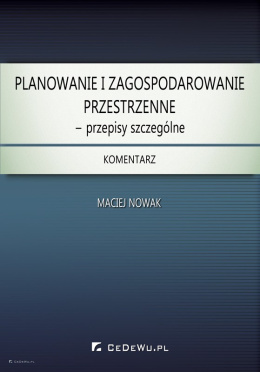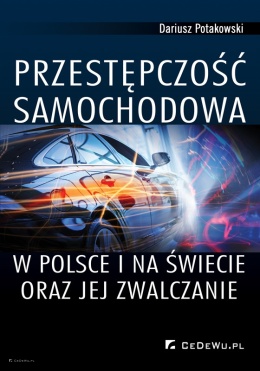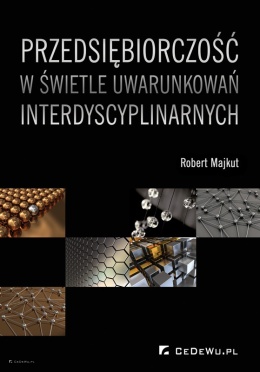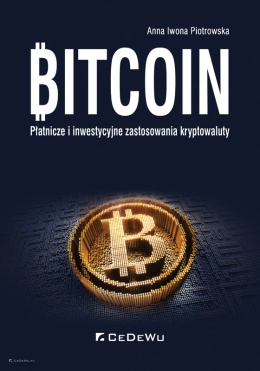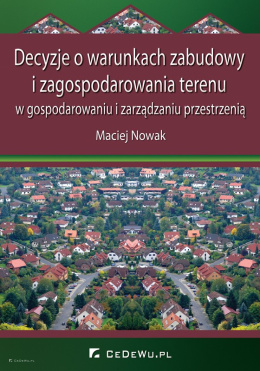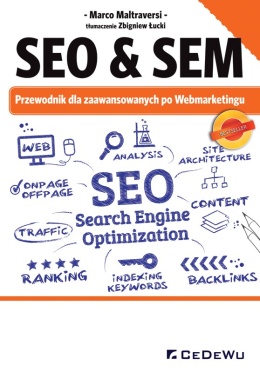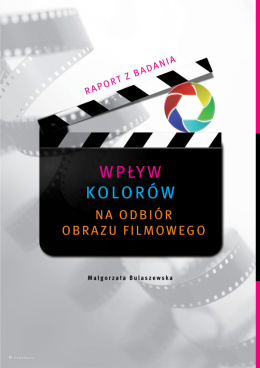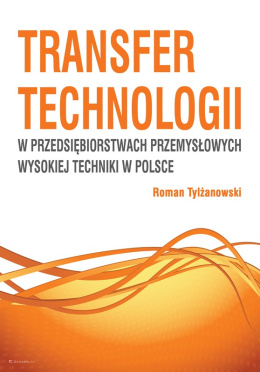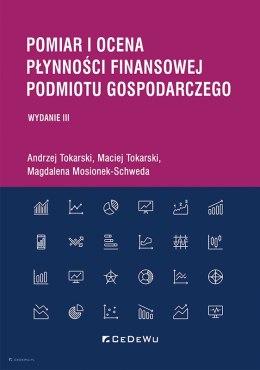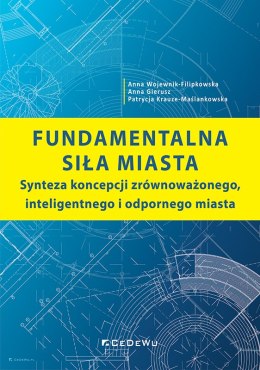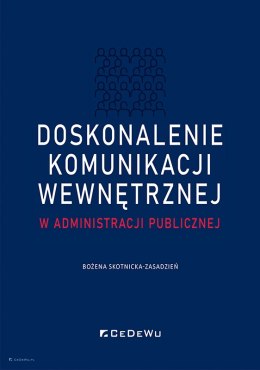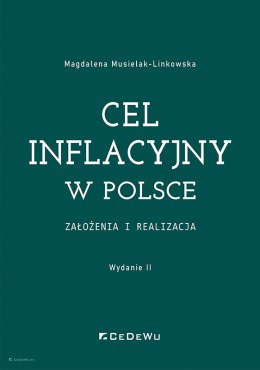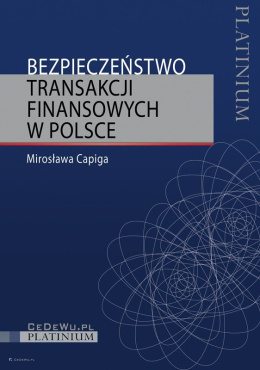-
Koszyk jest pusty
-
x

-
Koszyk jest pusty
-
x
- Kategorie
-
Transfer technologii. Transfer pionowy i transfer poziomy w działalności przedsiębiorstw
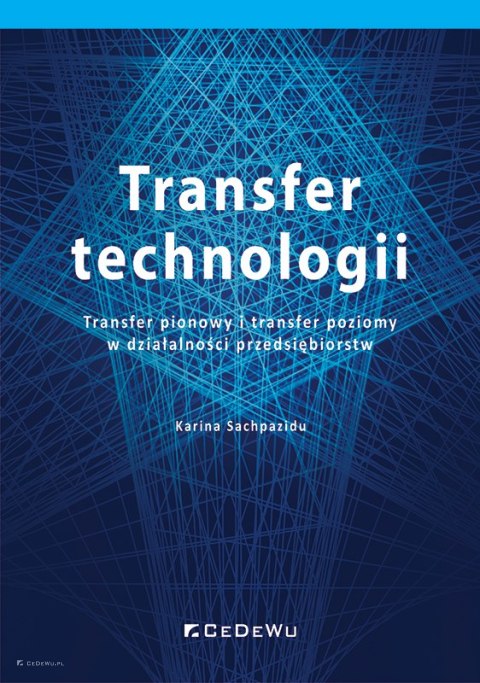
W rozwoju przedsiębiorstw coraz większe znaczenie przypisuje się technologii, zarówno w ujęciu tradycyjnym, jak również rozumianej jako wiedza technologiczna, nabierająca szczególnego znaczenia aktualnie, w dynamicznie zmieniającym się otoczeniu. Firmy zainteresowane wdrażaniem innowacji, wprowadzaniem nowych produktów i usług na rynek coraz większą uwagę poświęcają zaplanowanym procesom zarządzania technologią i wiedzą, dzięki czemu sprawniej i w większym stopniu osiągają sukces rynkowy i tym samym podnoszą swoją zyskowność. Praktyczne zastosowanie technologii i wiedzy stwarza możliwość uzyskiwania konkurencyjnej przewagi przez przedsiębiorstwo, niedostrzeganie zaś znaczenia technologii i wiedzy w działalności przedsiębiorstw wiąże się z brakiem ich rozwoju, a często nawet ich upadkiem. Coraz większe wymagania klientów, silnie i dynamicznie rozwijająca się konkurencja oraz coraz krótsze cykle życia produktów − wymuszają ciągłe zmiany w funkcjonowaniu współczesnych firm. Jednym z kluczowych źródeł technologii i wiedzy w przedsiębiorstwach jest transferowanie jej z zewnętrznych podmiotów, bardziej zaawansowanych technologicznie. Przedsiębiorstwa mogą pozyskać technologię oraz wiedzę z jednostek badawczo-rozwojowych, takich jak instytuty badawcze czy uczelnie wyższe, mogą także ją transferować z innych przedsiębiorstw. W pierwszym przypadku firmy stają przed wyzwaniem pionowego transferu technologii, w drugim − poziomego transferu technologii. Obecny stan wiedzy w zakresie specyfiki transferu technologii, realizowanego przez przedsiębiorstwa ze szczególnym uwzględnieniem jego pionowego i poziomego rodzaju, oraz znaczenia transferu technologii w uzyskiwaniu konkurencyjnej przewagi przez przedsiębiorstwa jest ograniczony. Zarówno wiedza i technologia, jak i możliwa do osiągnięcia przewaga konkurencyjna, wynikająca z ich zastosowania, stanowią istotny obszar zainteresowań i samych firm, i badaczy. Monografia jest odpowiedzią na bieżące potrzeby w zakresie transferu technologii oraz konkurencyjnej przewagi przedsiębiorstw, a jej głównym celem jest integracja i rozwój istniejącej wiedzy w zakresie transferu technologii, a także określenie znaczenia transferu technologii i siły jego oddziaływania na przewagę konkurencyjną przedsiębiorstw.
| Wysyłka w ciągu | 24 godziny |
| Kod kreskowy | |
| ISBN | 978-83-8102-558-4 |
| EAN | 9788381025584 |
Praktyczne zastosowanie technologii i wiedzy stwarza możliwość uzyskiwania konkurencyjnej przewagi przez przedsiębiorstwo, niedostrzeganie zaś znaczenia technologii i wiedzy w działalności przedsiębiorstw wiąże się z brakiem ich rozwoju, a często nawet ich upadkiem. Coraz większe wymagania klientów, silnie i dynamicznie rozwijająca się konkurencja oraz coraz krótsze cykle życia produktów − wymuszają ciągłe zmiany w funkcjonowaniu współczesnych firm. Jednym z kluczowych źródeł technologii i wiedzy w przedsiębiorstwach jest transferowanie jej z zewnętrznych podmiotów, bardziej zaawansowanych technologicznie. Przedsiębiorstwa mogą pozyskać technologię oraz wiedzę z jednostek badawczo-rozwojowych, takich jak instytuty badawcze czy uczelnie wyższe, mogą także ją transferować z innych przedsiębiorstw. W pierwszym przypadku firmy stają przed wyzwaniem pionowego transferu technologii, w drugim − poziomego transferu technologii. Obecny stan wiedzy w zakresie specyfiki transferu technologii, realizowanego przez przedsiębiorstwa ze szczególnym uwzględnieniem jego pionowego i poziomego rodzaju, oraz znaczenia transferu technologii w uzyskiwaniu konkurencyjnej przewagi przez przedsiębiorstwa jest ograniczony.
Zarówno wiedza i technologia, jak i możliwa do osiągnięcia przewaga konkurencyjna, wynikająca z ich zastosowania, stanowią istotny obszar zainteresowań i samych firm, i badaczy. Monografia jest odpowiedzią na bieżące potrzeby w zakresie transferu technologii oraz konkurencyjnej przewagi przedsiębiorstw, a jej głównym celem jest integracja i rozwój istniejącej wiedzy w zakresie transferu technologii, a także określenie znaczenia transferu technologii i siły jego oddziaływania na przewagę konkurencyjną przedsiębiorstw.
Wstęp 9
Rozdział 1
Istota i znaczenie transferu technologii 15
1.1. Pojęcie transferu technologii 15
1.1.1. Definicja transferu technologii 15
1.1.2. Wiedza i technologia 20
1.2. Proces i fazy transferu technologii 22
1.2.1. Transfer technologii w ujęciu procesowym 22
1.2.2. Fazy transferu technologii 24
Rozdział 2
Przeniesienie technologii w ramach transferu technologii – kanały 29
2.1. Istota i pojęcie kanału transferu technologii 29
2.2. Kanały transferu technologii 31
2.3. Kanały formalnego i nieformalnego transferu technologii 34
2.4. Kanały wewnętrznego i zewnętrznego transferu technologii 3
Rozdział 3
Transfer technologii z jednostek naukowych i przedsiębiorstw 41
3.1. Pionowy transfer technologii 41
3.2. Poziomy transfer technologii 46
3.3. Aktorzy procesu transferu technologii 48
3.3.1. Dawca, biorca i pośrednik w procesie transferu technologii 48
3.3.2. Znaczenie uczelni w procesie transferu technologii 50
3.3.3. Centra transferu technologii 54
Rozdział 4
Czynniki determinujące i efekty procesu transferu technologii 57
4.1. Czynniki determinujące transfer technologii 57
4.1.1. Organizacyjne czynniki determinujące transfer technologii 57
4.1.2. Indywidualne czynniki determinujące transfer technologii 64
4.2. Efekty procesu transferu technologii 68
4.3. Przewaga konkurencyjna przedsiębiorstwa jako efekt transferu technologii 76
Rozdział 5
Transfer technologii a przewaga konkurencyjna przedsiębiorstwa 79
5.1. Metodyka badań 79
5.1.1. Założenia badawcze projektu 79
5.1.2. Model i hipotezy badawcze 81
5.2. Zmienne w modelu badawczym 84
5.3. Badane przedsiębiorstwa – próba badawcza 88
5.3.1. Dobór próby badawczej 88
5.3.2. Charakterystyka badanych przedsiębiorstw 90
5.4. Charakterystyka transferu technologii 92
5.4.1. Pionowy transfer technologii w przedsiębiorstwach przemysłowych 92
5.4.2. Poziomy transfer technologii w przedsiębiorstwach przemysłowych 93
Rozdział 6
Wpływ transferu technologii na przewagę konkurencyjną przedsiębiorstwa w ujęciu empirycznym 95
6.1. Modelowanie strukturalne transferu technologii i przewagi konkurencyjnej przedsiębiorstwa 95
6.2. Analiza czynnikowa 98
6.3. Analiza rzetelności instrumentu pomiarowego zmiennych ukrytych 102
6.4. Interpretacja uzyskanych wyników 111
Zakończenie 115
Bibliografia 119
Spis rysunków 129
Spis tabel 131
Adams M., Spann M.S. (1995). Strategic redirection via technology commercialization: Preliminary results from defense and space contractors. The Journal of High Technology Management Research, 6(1), 77-93.
Alavi M., Leidner D.E. (2001). Knowledge Management and Knowledge Management Systems: Conceptual Foundations and Research Issues. MIS Quarterly, 25, 107-36.
Amesse F., Cohendet P. (2001). Technology transfer revisited from the perspective of the knowledgebased economy. Research Policy, 30, 1459-1478.
Anderson A.R., Benavides-Espinosa M., Mohedano-Suanes A. (2011). Innovation in Services through Learning in a Joint Venture. Services Industries Journal, 31(12), 2019-32.
Anderson T.R., Daim T.U., Lavoie F.F. (2007). Measuring the efficiency of university technology transfer. Technovation, 27(5), 306-318.
Ankrah S., Omar A. (2015). Universities – industry Collaboration: A Systematic Review. Scandinavian Journal of Management, 31/3, 387-408.
Argabright G.C. (1999). Using technology transfer to improve safety and health. Professional Safety, 44(9), 28-32.
Argote L. (1999). Organizational learning: Creating, retaining and transferring knowledge. Boston: Kluwer.
Arrow K. (1969). Classificatory notes on the production and transmission of technological knowledge. American Economic Review. Papers and Proceedings.
Audretsch D.B., Lehmann E.E., Wright M. (2014). Technology transfers in a global economy. The Journal of Technology Transfer, 39(3), 301-312.
Autio E., Laamanen T. (1995). Measurement and evaluation of technology transfer: Review of technology transfer mechanisms and indicators. Technology Management, 10(7/8), 643-664.
Bach L., Cohendet P., Schenk E. (2002). Technological Transfers from the European Space Programs: A Dynamic View and Comparison with Other R&D Projects. Journal of Technology Transfer, 27(4), 321-338.
Baldini N., Grimaldi R., Sobrero M. (2007). To patent or not to patent? A survey of Italian inventors on motivations, incentives, and obstacles to university patenting. Scientometrics, 70, 333-354.
Barney J. (1991). Firm resources and sustained competitive advantage. Journal of Management, 17(1), 99-120.
Battistella C., Toni A., Pillon R. (2016). Inter-organisational technology/knowledge transfer: a framework from critical literature review. The Journal of Technology Transfer, 41(5), 1195-1234.
Bekkers R., Bodas Freitas I.M. (2008). Analysing knowledge transfer channels between universities and industry: To what degree do sectors also matter? Research Policy, 37(10), 1837-1853.
Bellamy S., Morley C., Watty K. (2003). Why business academics remain in Australian universities despite deteriorating working conditions and reduced job satisfaction: an intellectual puzzle. Journal of Higher Education Policy, 25, 13-28.
Bierly P.E., Kessler E.H., Christensen E.W. (2000). Organizational learning, knowledge and wisdom. Journal of Organizational Change Management.
Bishop K., D’Este P., Neely A. (2011). Gaining from interactions with universities: Multiple methods for nurturing absorptive capacity. Research Policy, 40(1), 30-40.
Blomstrom M. (1990). Transnational Corporations and Manufacturing Exports from Developing Countries. United Nations, New York, NY.
Bolukbas U., Guneri A.F. (2017). Knowledge-based decision making for the technology competency analysis of manufacturing enterprises. Applied Soft Computing, 67, 781-799.
Botelho A.J.J., Almeida M. (2011). Overcoming institutional shortcomings for academic spin-off policies in Brazil. The International Journal of Technology Management & Sustainable Development, 9(3), 175-193.
Bozeman B. (2000). Technology transfer and public policy: A review of research and theory. Research Policy, 29, 627-655.
Bozeman B., Rimes H., Youtie J. (2015). The evolving state-of-the-art in technology transfer research: Revisiting the contingent effectiveness model. Research Policy, 44(1), 34-49.
Bubenheim D.L., Lewis C. (1997). Application of NASA’s advanced life support technologies in polar regions. Advances in Space Research, 20(10), 2037-2044.
Burgelman R.A., Maidique M.A., Wheelwright S.C. (1996). Strategic management of technology and innovation. Vol. 2, Chicago: Irwin.
Byrne B.M. (2016). Structural Equation Modeling with Amos. Basic Concepts, Applications, and Programming. Third Edition, Routledge, Taylor & Francis Group, Nowy Jork.
Cao Y., Zhao L., Chen R. (2009). Institutional structure and incentives of technology transfer. Journal of Technology Management in China, 4, 67-84.
Chambers J.G., Price P.J. (1995). Canadian experience in space technology spin-offs. Acta Astronautica, 37, 497-502.
Christensen C.M., Bower J.L. (1996). Customer power, strategic investment, and the failure of leading firms. Strategic Management Journal, 17(3), 197-218.
Clark K.B., Fujimoto T. (1991). Product development performance: Strategy, organization, and management in the world auto industry. HBS Press, Boston.
Cohen W.M., Nelson R.R., Walsh J.P. (2002). Links and impacts: The influence of public research on industrial R&D. Management Science, 48(1), 1-23.
Cohendet P. (1997). Evaluating the indirect effects of technology programmes: the case of the European Space Agency (ESA) Programmes, in Policy Evaluation in Innovation and Technology: Towards Best Practices, ed. OCDE.
Colaianni A.A.-D. (2009). Columbia University’s axel patents: technology transfer and implications for the Bayh-Dole Act. Milbank Quarterly, 87(3), 683-715.
Cummings J.L., Teng B. (2003). Transferring R&D Knowledge: The Key Factors Affecting Knowledge Transfer Success. Journal of Engineering and Technology Management, 20/12. 39-68.
Czupryński P., Ćwiklicki M., Kopyciński P., Machnik A., Mituś A., Staszczyszyn B., Widziszewska J., Zawicki M. (2006). Organizacja transferu technologii w sieciach instytucji otoczenia biznesu. Kraków, Małopolska Szkoła Administracji Publicznej.
D’Este P., Patel P. (2007). University-industry linkages in the UK: what are the factors underlying the variety of interactions with industry? Research Policy, 36, 1295-1313.
Dang Q.T., Jasovska P., Rammal H.G., Schlenker K. (2019). Formal-informal channels of university-industry knowledge transfer: The case of Australian business schools. Knowledge Management Research & Practice, 17, 384-395.
De Toni A.F., Nonino F., Pivetta M. (2011). A model for assessing the coherence of companies’ knowledge strategy. Knowledge Management Research & Practice, 9(4), 327-341.
Dec D., Lityński K. (2008). Przewodnik komercjalizacji dóbr intelektualnych poprzez spółki spin-off. RCIiTT, PFP, Szczecin.
Deci E., Ryan R. (1975). Intrinsic Motivation. New York: John Wiley & Sons, Inc.
Dejnaka A. (2003). Zasoby ludzkie. Planowanie i zarządzanie. Gliwice, Helion.
Dhawan S.K., Roy S., Kumar S. (2002). Organizational energy: an empirical study in Indian R&D laboratories. R&D Management, 32, 397-408.
Drucker P.F. (1994). Menedżer skuteczny. Nowoczesność. Akademia Ekonomiczna w Krakowie, Czytelnik.
Dunkin R. (2003). Motivating knowledge workers. Higher Education Management and Policy, 15, 41-49.
Dydych W. (2015). Cel i przebieg badań z wykorzystaniem metod ilościowych, [w:] W. Czakon (red.), Podstawy metodologii badań w naukach o zarządzaniu. Wyd. 3 rozszerzone, Wolters Kluwers Business, Warszawa.
Etzkowitz H., Leydesdorff L. (2000). The dynamics of innovation: from national systems and “mode 2” to a triple helix of university – industry – government relations. Research Policy, 29, 109-123.
Fartash K., Davoudi S.M.M., Baklashova T.A., Svechnikova N.V., Nikolaeva Y.V., Grimalskaya S.A., Beloborodova A.V. (2018). The impact of technology acquisition & exploitation on organizational innovation and organizational performance in knowledge-intensive organizations. Eurasia Journal of Mathematics, Science and Technology Education, 14(4), 1497-1507.
Fabiano G., Marcellusi A., Favato G. (2020). Channels and processes of knowledge transfer: How does knowledge move between university and industry? Science and Public Policy, 47(2), 256-270.
Feldman M.P., Feller I., Bercovitz J., Burton R. (2002). Equity and the technology transfer strategies of American Research Universities. Management Science, 48(1), 105-121.
Fornell C., Larcker D.F. (1981). Evaluating structural equation models with unobservable variables and measure. Journal of Marketing Research, 18(1), 39-50.
Franco M., Haase H. (2015). University – industry cooperation: researchers’ motivations and interaction channels. Journal of Engineering and Technology Management, 36, 41-51.
Freitas I.M.B., Verspagen B. (2017). The Motivations, Institutions and Organization of University-industry Collaborations in the Netherlands. Journal of Evolutionary Economics, 27(3), 379-412.
Fullwood R., Rowley J., Delbridge R. (2013). Knowledge sharing amongst academics in UK universities. Journal of Knowledge Management, 17, 123-136.
Gatnar E., Walesiak M. (2004). Metody statystycznej analizy wielowymiarowej w badaniach marketingowych. Wrocław, Wydawnictwo Akademii Ekonomicznej we Wrocławiu.
Gilbert M., Cordey-Hayes M. (1996). Understanding the process of knowledge transfer to achieve successful technological innovation. Technovation 16 (6), 301-312.
Gonzalez T. (2010). Triple helix model of relations among university, industry and government:
a critical analysis. Arbor-Ciencia Pensamiento Y Cultura, 185(738), 739-755.
Gorschek T.C. (2006). A model for technology transfer in practice. Software, 23(6), 88-95.
Grimpe C., Hussinger K. (2013). Formal and informal knowledge and technology transfer from academia to industry: Complementarity effects and innovation performance. Ind. Innov, 20, 683-700.
Grimper C., Fier H. (2010). Informal university technology transfer: a comparison between the United States and Germany. The Journal of Technology Transfer, 35(6), 637-650.
Hayter C.S. (2011). In search of the profit-maximizing actor: Motivations and definitions of success from nascent academic entrepreneurs. The Journal of Technology Transfer, 36(3), 340-352.
Hughes A., Kitson M. (2012). Pathways to impact and the strategic role of universities. New evidence on the breadth and depth of university knowledge exchange in the UK and the factors constraining its development. Cambridge Journal of Economics, 36, 723-750.
Hughes S. (2007). Opportunities for the transfer of astronomical technology to medicine. Australasian Physical & Engineering Sciences in Medicine, 30(4), 292-4.
Huuck R. (2015). Technology transfer: formal analysis, engineering, and business value. Science of Computer Programming, 103(1), 3-12.
Iansiti M. (1995). Shooting the Rapids: Managing Product Development in Turbulent Environments. California Management Review.
ISU (1997). Technology transfer – bridging space and socjety. Acta Astronautica, 41(4-10), 493-505.
Jabbour L., Mucchielli J.L. (2007). Technology Transfer Through Vertical Linkages: The Case of the Spanish Manufacturing Industry. Journal of Applied Economics, 10(1), 115-136.
Kang M., Kim Y.G., Bock G.W. (2010). Identifying different antecedents for closed vs open knowledge transfer. J. Inf. Sci., 36, 585-602.
Khakbaz P.P. (2012). The Role of Research and Development in Growth of Small and Medium Enterprise in Technological Cluster of Regions. Information Management and Business Review, 4(5), 234-241.
Kim E.Y. (1990). Multinational: preparation for international technology transfer. [w:] Gibson D.V., Williams F. (Eds.), Technology Transfer: A Communication Perspective. Sage, London.
Klimas P. (2019). Relacje współtworzenia innowacji w ekosystemach. Kontekst ekosystemu gamingowego. Warszawa, C.H. Beck.
Kogut B., Zander U. (1992). Knowledge of the firm, combinative capabilities and the replication of technology. Organization Science, 3(3), 383-397.
Konarski R. (2009). Modele równań strukturalnych. Teoria i praktyka. Wydawnictwo Naukowe PWN, Warszawa.
Kotabe M., Dunlap-Hinkler D., Parente R., Mishra H. (2007). Determinants of cross-national knowledge transfer and its effect on firm innovation. Journal of International Business Studies, 38, 259-82.
Krężołek D. (2020). Modelowanie ryzyka na rynku metali. Katowice, Wydawnictwo Uniwersytetu Ekonomicznego w Katowicach.
Krishen K. (2011). Multiple Aspects of Space Technology Transfer. IETE Technical Review, 28(3), 195-206.
Kroner M. (1980). US international transactions in royalties and fees: 1967-1978. Survey of Current Business, 29-35.
Kumar R. (1999). Research Methodology: A Step-by-Step Guide for Beginners. Sage Publications, London, Thousand Oaks, New Delhi.
Lam A., de Campos A. (2015). “Content to be sad” or “runaway apprentice”? The psychological contract and career agency of young scientists in the entrepreneurial university. Human Relations, 68, 811-841.
Lamming R. (1993). Beyond Partnership: Strategies for Innovation and Lean Supply. The Manufacturing Practitioner Series, Prentice-Hall, Englewood Cliffs, NJ.
Landry R., Amara N., Cloutier J.S., Halilem N. (2013). Technology transfer organizations: Services and business models. Technovation, 33(12), 431-449.
Levin M. (1997). Technology transfer is organisational development: an investigation into the relationship between technology transfer and organisational change. International Journal of Technology Management, 14 (2-4), 297-308.
Liao S.-H., Hu T.-C. (2007). Knowledge transfer and competitive advantage on environmental uncertainty: An empirical study of the Taiwan semiconductor industry. Technovation, 27(6-7), 402-411.
Lin B.-W. (2003). Technology transfer as technological learning: a source of competitive advantage for firms with limited R&D resources. R&D Management, 33(3), 327-341.
Link A.N., Siegel D.S., Bozeman B. (2007). An empirical analysis of the propensity of academics to engage in informal university technology transfer. Industrial and corporate change, 16(4), 641-655.
Liu X., Wang C. (2003). Does foreign direct investment facilitate technological progress? Evidence from Chinese industries. Research Policy, 32, 953-4.
Liyanage C., Elhag T., Ballal T., Li Q. (2009). Knowledge Communication and Translation
– A Knowledge Transfer Model. Journal of Knowledge Management, 13(3), 118-31.
Lounsbury J.W., Foster N., Patel H., Carmody P., Gibson L.W., Stairs D.R. (2012). An investigation of the personality traits of scientists versus nonscientists and their relationship with career satisfaction. R&D Management, 42, 47-59.
Lundquist G. (2003). A Rich Vision of Technology Transfer Technology Value Management. Journal of Technology Transfer, 28(3-4), 265-284.
Madu R. (2015). Technology transfer: formal analysis, engineering, and business value. Science of Computer Programming, 103(1), 3-12.
Malik K. (2002). Aiding the technology manager: A conceptual model for intra-firm technology transfer. Technovation, 22(7), 427-436.
Markusen J.R., Venables A.J. (1999). Foreign direct investment as a catalyst for industrial development. European Economic Review, 43, 335-56.
Mascarenhas C., Ferreira J.J., Marques C. (2018). University – industry cooperation: A systematic literature review and research agenda. Science and Public Policy, 45(5), 708-718.
Matusiak K.B. (2010). Budowa powiązań nauki z biznesem w gospodarce opartej na wiedzy. Rola i miejsce uniwersytetu w procesach innowacyjnych, SGH, Warszawa.
Mayer S., Blaas W. (2002). Technology Transfer: An Opportunity for Small Open Economies. Journal of Technology Transfer.
Mendoza X.P.L., Sanchez D.S.M. (2018). A systematic literature review on technology transfer from university to industry. International Journal of Business and Systems Research, 12(2), 197-225.
Molas-Gallart J. (1997). Which way to go? Defence technology and the diversity of ‘dual-use’ technology transfer. Research Policy, 26(3), 367-385.
Molero J. (2008). The technology transfer revisited: basic concepts and new reflection from a model of excellence management. ARBOR Ciencia Pensamiento y Cultura, 184(732), 637-651.
Mowery D., Rosenberg N. (1998). Paths of Innovation, Technological Change in 20th Century America. Cambridge, UK: Cambridge University Press.
Muscio A., Quaglione D., Vallanti G. (2013). Does Government Funding Complement or Substitute Santor Private Research Funding to Universities?. Research Policy, 42(1), 63-75.
Nauka i technika 2019 (2021). Główny Urząd Statystyczny, Warszawa-Szczecin.
Nicolaou N., Birley S. (2003). Academic networks in trichotomous categorisation of university spinouts. Journal of Business Venturing, 18, 333-359.
Nilsen V., Anelli G. (2016). Knowledge transfer at CERN. Technological Forecasting and Social Change, 112, 113-120.
Nosella A., Petroni G. (2007). Multiple Network Leadership as a Strategic Asset: The Carlo Gavazzi Space Case. Long Range Planning, 40(2), 178-201.
O’Gorman C., Byrne O., Pandya D. (2008). How scientists commercialise new knowledge via entrepreneurship. The Journal of Technology Transfer, 33(1), 23-43.
Olaya Escobar E.S., Berbegal-Mirabent J., Alegre I., Duarte Velasco O.G. (2017). Researchers’ willingness to engage in knowledge and technology transfer activities: an exploration of the underlying motivations. R&D Management, 47(5), 715-726.
Olayan H.B. (1999). Technology transfer in developing nations. Research-Technology Management, 42(3), 43-48.
Omar R.T. (2010). Technology transfer (TT) and technology exchange (TE) in Malaysia. Education and Management Technology (ICEMT), 6-12, IEEE, Cairo.
O’Shea R., Allen T.J., O’Gorman C., Roche F. (2004). Universities and technology transfer:
A review of academic entrepreneurship literature. Irish Journal of management, 25(2).
Owen-Smith J., Powell W.W. (2001). To patent or not: faculty decisions and institutional success at technology transfer. Journal ofTechnology Transfer, 26, 99-114.
Pankova L. (2002). Transfer of Space Technologies Past and Present: The Russian Case. Journal of Technology Transfer, 27(4), 349-360.
Perkmann M., Walsh K. (2007). University – industry relationships and open innovation: Towards a research agenda. International Journal of Management Reviews, 9(4), 259-280.
Petroni G., Verbano C. (2000). The development of a technology transfer strategy in the aerospace industry: The case of the Italian Space Agency. Technovation, 20(7), 345-351.
Petroni G., Venturini K., Santini S. (2010). Space technology transfer policies: Learning from scientific satellite case studies. Space Policy, 26(1), 39-52.
Porter M.E. (1992). Strategia konkurencji. Metody analizy sektorów i konkurentów. Warszawa: PWE.
Porter M.E. (2001). Porter o konkurencji. Warszawa, PWE.
Porter M.E. (1985). Technology and competitive advantage. Journal of Business Strategy.
Purushotham H., Vaithianathan S., Sunder C.S. (2016). Structural Equation Modeling (SEM) Approach to Identify Critical Success Factors of Technology Transfer: an Empirical Analysis from Indian Context. Advances in Industrial Engineering and Management, 4(2), 123-146.
Rahmany M.B., Tawil B.J., Hellman K.B., Johnson P.C., Van Dyke M., Bertram T. (2013). Bench to Business: A Framework to Assess Technology Readiness. Tissue Engineering Part A, 19(21-22), 2314-2317.
Reisman A. (2005). Transfer of technologies: a cross-disciplinary taxonomy. Omega, 33(3), 189-202.
Roessner J. (2000). Technology transfer. Science and Technology Policy in the USA Time of Change. Longman, London.
Rogers E.M. (1995). Diffusion of Innovation. New York: Free Press.
Rosenberg N., Frischtak C. Preface (1985). [In:] Rosenberg N., Frischtak C., editors. International technology transfer: concepts, measures and comparisons. New York:Praeger Publishing Co.
Ryan J.C. (2014). The work motivation of research scientists and its effect on research performance. R&D Management, 44, 355-369.
Sachpazidu-Wójcicka K. (2019). Wpływ transferu technologii na zmiany innowacyjne w małych i średnich przedsiębiorstwach, Wydawnictwo Uniwersytetu w Białymstoku.
Sætre A.S., Wiggins J., Atkinson O.T., Atkinson B.K.E. (2009). University spin-offs as technology transfer: a comparative study among Norway, the United States, and Sweden. Comparative Technology Transfer and Society, 7(2), 115-145.
Sankat C., Pun K.P., Motilal C.B. (2007). Technology transfer for agro-industries in developing nations: a Caribbean perspective. International Journal of Agricultural Resources, Governance and Ecology, 6(6).
Santoro M.D., Chakrabarti A.K. (2002). Firm size and technology centrality in industry – university interactions. Research Policy, 31(7), 1163-1180.
Schartinger D., Rammer C., Frohlich J. (2006). Knowledge Interactions between Universities and Industry in Austria: Sectoral Patterns and Determinants. [w:] Innovation, Networks, and Knowledge Spillovers, 135-66. Berlin, Heidelberg, Springer.
Schlie R. (1987). Indicators of International Technology Transfer, 23, 32-36, Centre for the Interdisciplinary Study of Science and Technology, North Western University, Evanston.
Schoen A.B. (2014). Governance typology of universities technology transfer. The Journal of Technology Transfer, 39(3), 435-453.
Schumacker R.E., Lomax R.G. (2010). A Beginner’s Guide to Structural Equation Modeling, Third Edition, Routledge. New York: Taylor & Francis Group.
Schumpeter J. (1960). Teoria rozwoju gospodarczego, Warszawa, PWN.
Shortell S.M., Zajac E.J. (1988). Internal corporate joint ventures: development processes and performance outcomes. Strategic Management Journal, 9, 527-42.
Siegel D.S., Waldman D., Link A. (2003). Assessing the impact of organizational practices on the relative productivity of university technology transfer offices: an exploratory study. Research Policy, 32(1), 27-48.
Solow R.M. (1957). Technical change and the aggregate production function. The Review of Economics and Statistics, 312-320.
Stoner J.A., Freeman R.E., Gilbert D.R. (1997). Kierowanie, Warszawa, PWE.
Szalai B., Detsis E., Peeters W. (2012). ESA space spin-offs benefits for the health sector. Acta Astronautica, 80, 1-7.
Szatkowski K. (2016), Zarządzanie innowacjami i transferem technologii. Wydawnictwo Naukowe PWN, Warszawa.
Szulanski G. (1996). Exploring internal stickness: Impediments to the transfer of best practice within the firm. Strategic Management Journal, 17, 27-43.
Szulanski G. (2000). The process of knowledge transfer: A diachronic analysis of stickiness. Organizational Behavior and Human Decision Processes, 82(1), 9-27.
Światowiec-Szczepańska J. (2012). Ryzyko partnerstwa strategicznego przedsiębiorstw. Ujęcie modelowe, Poznań: Wydawnictwo Uniwersytetu Ekonomicznego w Poznaniu.
Światowiec-Szczepańska J. (2015). Zaawansowane testowanie modeli badawczych, [w:] W. Czakon, Podstawy metodologii badań w naukach o zarządzaniu. Warszawa, Wolters Kluwer Polska, 351-379.
TEURPIN. (2001). European technology transfer guide to best practices. http://www.innovatingregions. org/download/teurpin%5 Guide%2 Pdf
Thursby J.G., Thursby M.C. (2002). Who is selling the ivory tower? Sources of growth in university licensing. Management Science, 48(1), 90-104.
Urbano D., Guerrero M. (2013). Entrepreneurial universities: socioeconomic impacts of academic entrepreneurship in a European context. Economic Development Quarterly, 27, 40-55.
Vedovello C. (1997). Science Parks and University-industry Interaction: Geographical Proximity between the Agents as a Driving Force. Technovation, 17(9), 491-531.
Venturini K., Verbano C. (2013). Space Technology Transfer: A Systematic Literature Review. In European Conference on Innovation and Entrepreneurship. Academic Conferences International Limited Schumpete, 2, 613.
Venturini K., Verbano C., Matsumoto M. (2013). Space technology transfer: spin-off cases from Japan. Space Policy, 29(1), 49-57.
Vetroni M.B., Ferreira M.B., Prado G.F., Piekarski C.M., Picinin C.T. (2020). The interaction between knowledge management and technology transfer: a current literature review between 2013 and 2018, The Journal of Technology Transfer, 45(5), 1585-1606.
Waroonkun T., Stewart R.A. (2008a). Modeling the international technology transfer process in construction projects: evidence from Thailand. Journal of Technology Transfer, 33(6), 667-687.
Waroonkun T., Stewart R.A. (2008b). Pathways to enhanced value creation from the international technology transfer process in Thai construction projects. Construction Innovation, 8(4), 299-317.
Whangthomkum N., Igel B., Speece M. (2006). An empirical study of the relationship between absorptive capacity and technology transfer effectiveness. International Journal of Technology Transfer and Commercialisation, 5(1-2), 31-55.
Winfield D.L. (1997). Aerospace technology transfer to breast cancer imaging. Acta Astronautica, 41(4-10), 515-523.
Woerter M. (2012). Technology proximity between firms and universities and technology transfer. The Journal of Technology Transfer, Vol. 37, No. 6, p.828-866.
Zelkowitz M.V. (1996). Software engineering technology infusion within NASA. IEEE Transactions on Engineering Management, 43(3), 250-261.
Zhao L.M., Reisman A. (1992). Toward meta research on technology transfer. IEEE Transactions on Engineering Management, 39(1), 13-21.
Zhao L., Reddy N.M. (1993). Managing International Technology Transfer Negotiation: A Social Exchange Perspective. Technovation, 13(6), 383-397.
Zimbardo P.G., Johnson R.L., McCann V. (2010). Psychologia – kluczowe koncepcje, motywacja i uczenie się. Warszawa, PWN.
Polub nas na Facebooku
